Daniel Macháček • Nov 29, 2012
Images from the long-awaited Dawn Vesta data set
This blog entry first appeared at Macháček's own blog and is translated from Czech and reposted here with permission. --ESL
A few days ago, the Dawn mission finally published their archival data. The data were originally published at the turn of 2011/2012. Then the situation was complicated by what always complicates things: politics. If you are interested in details (especially regarding disputes over Vesta's coordinate system), you can read that here. Finally, the situation was resolved and the data were published. During the year of delay I often looked with anticipation to the Planetary Data System to check whether or not images were there, and I am delighted that they are finally available.
Was the wait worth it? Definitely!
Dawn spent more than one year at Vesta. During this year, the mission published many images from the onboard Framing Cameras (FC) to their website. The problem is that the images were published in such a manner that were difficult to edit, so they were not interesting for amateurs of my kind. Also, they were published as isolated frames, making it difficult to perceive the data in their broader context.
In the newly released data, we can see many sequences of overlapping images, which show Vesta as a unique body with interesting geology. Currently, the only images available were taken from a relatively high orbit (during the periods of approach, arrival, and the High Altitude Mapping Orbit or HAMO).
Here is one such sequence of images, taken on August 24, 2011, quickly assembled into an animation. It shows Vesta moving due to the relative motion of Dawn and Vesta and also due to the rapid rotation of Vesta. The rapid rotation is evident in the changing positions of the shadows. In the animation you can see part of the region around the south pole of Vesta, containing an impact basin with a tall central mountain.
The images generally have excellent quality despite the fact that they have not yet been calibrated. Unfortunately, sequential images were often separated by a large time interval (of several minutes). For a rapidly rotating asteroid like Vesta, the change in geometry makes it very difficult to assemble a mosaic. But for short sequences, say four shots from 0006121 to 0006124, it is sometimes possible to assemble a mosaic.
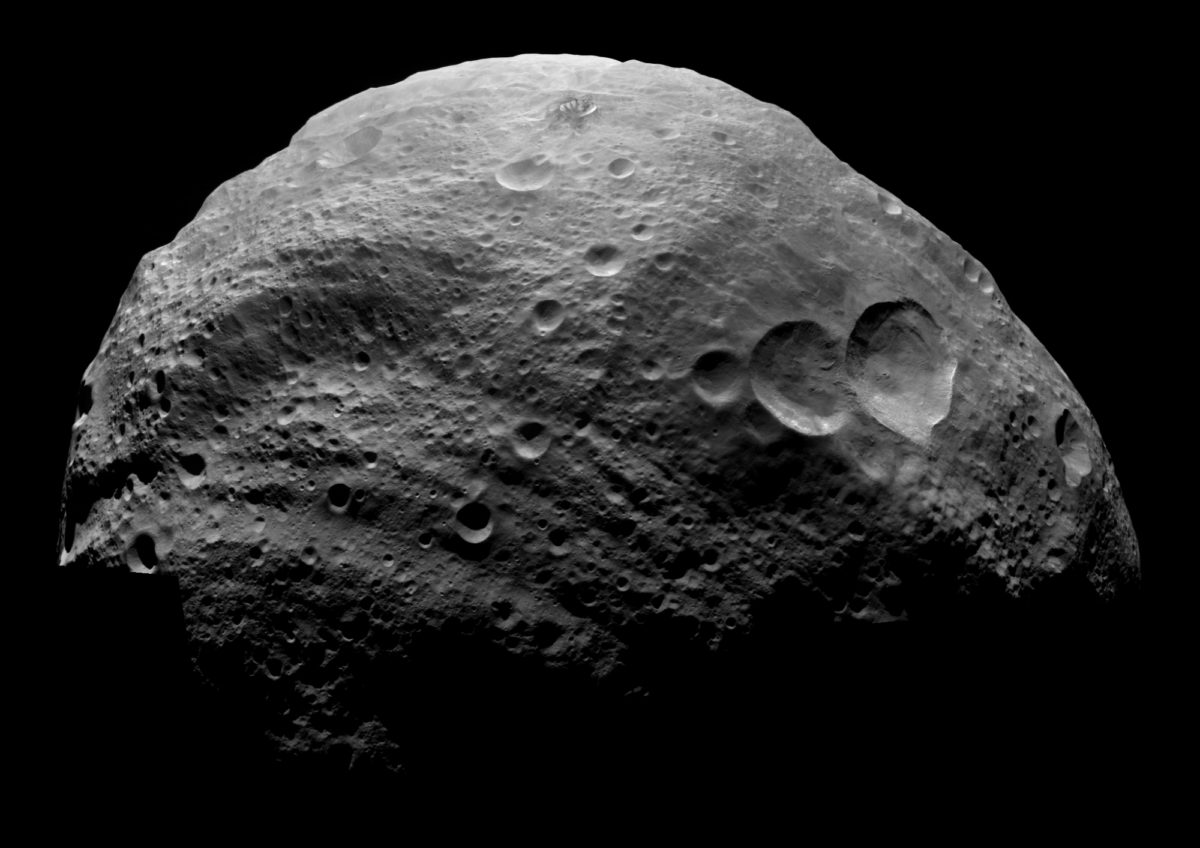
The mosaic above is the highest-resolution that can be created through simple methods. All of the images in the Vesta data set that are suitable for such mosaics are black-and-white, taken through a clear filter. So how to create a larger color image of Vesta? One option is to create a 3D model and perform a suitable reprojection of images on this model. This is the method chosen by the Framing Camera team. They have not yet published any larger mosaic, but in the future we can expect them to do so.
Because I do not have such experience yet with 3D graphics, I constructed my own color mosaic of Vesta in another way. I began with one of the last images of Vesta that contained (nearly) all of the asteroid, image 0003520. I magnified this by a factor of three, and used it as a background image. Then I took higher-resolution color filter images (taken through the red, green, and blue filters) and warped them to fit the background. Here is the result. The brownish color corresponds to the color of Vesta as seen in visible light. At this point, I have to thank one of the members of unmannedspaceflight.com, Stefan, who recently published a small but useful composition of three asteroids in approximately true color. I used this composition for the final fine-tuning of my color mosaic.
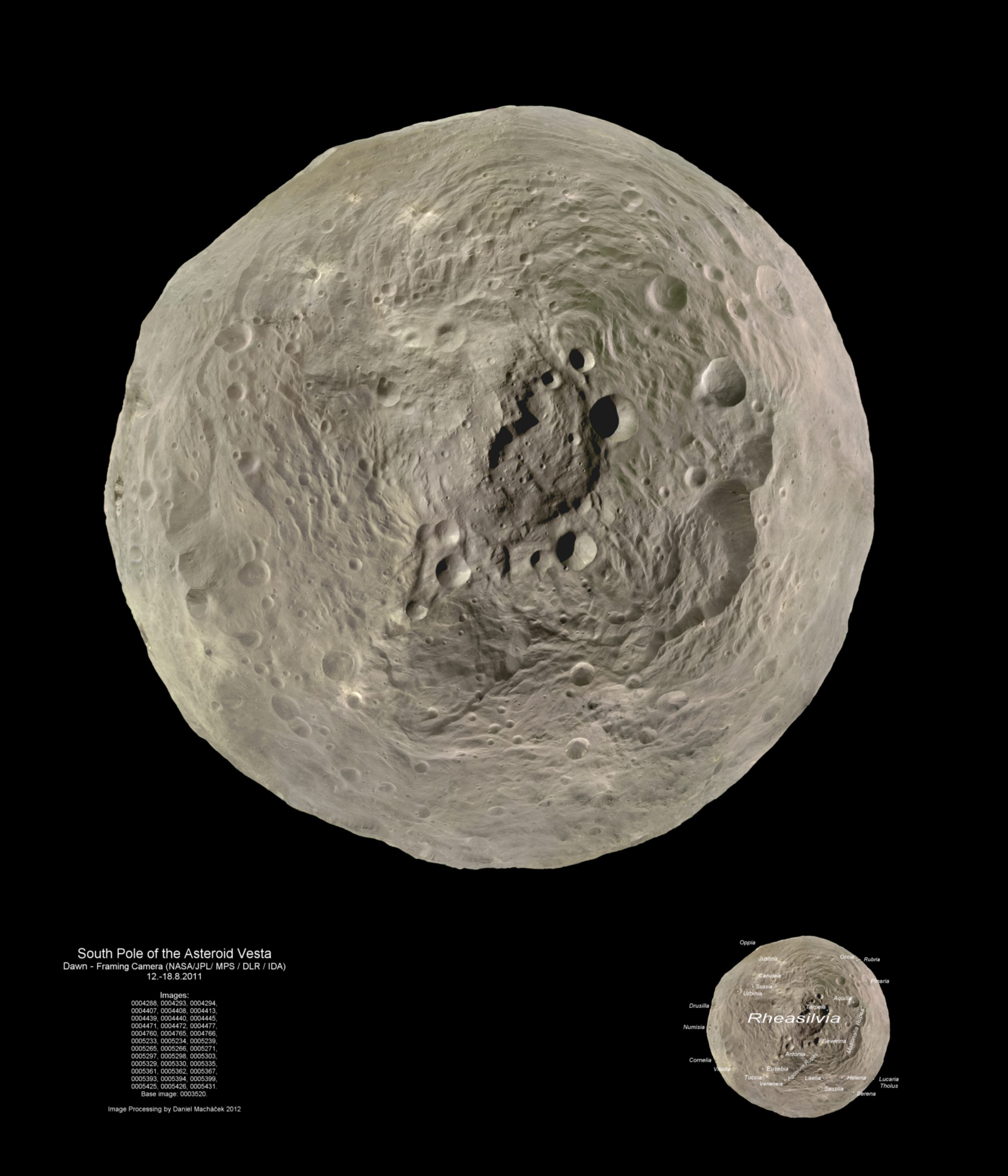
The attentive reader will probably quickly notice the strange shadows in this mosaic. The reason is quite simple. Although it approximates a true-color image, you would never actually see Vesta look like this. It is a mosaic of the southern hemisphere of Vesta, with the south pole approximately in the middle. Because Vesta rotates once every 5 hours (+ a few minutes), the shadows change so fast that there is not a set of images covering all of Vesta with the same lighting and from the same relative position of Vesta and Dawn. My most viable option was to use the frames with the best lighting and minimal number of shadows. The resulting mosaic shows the polar region and Vesta in almost full lighting, which is physically impossible.
What is the disadvantage for mosaics, is an advantage for stereoscopic imaging. Almost every two consecutively shot black-and-white images are so different that they can be displayed as stereograms. The pictures below are such stereograms, where you can see a relatively fresh crater named Cornelia.
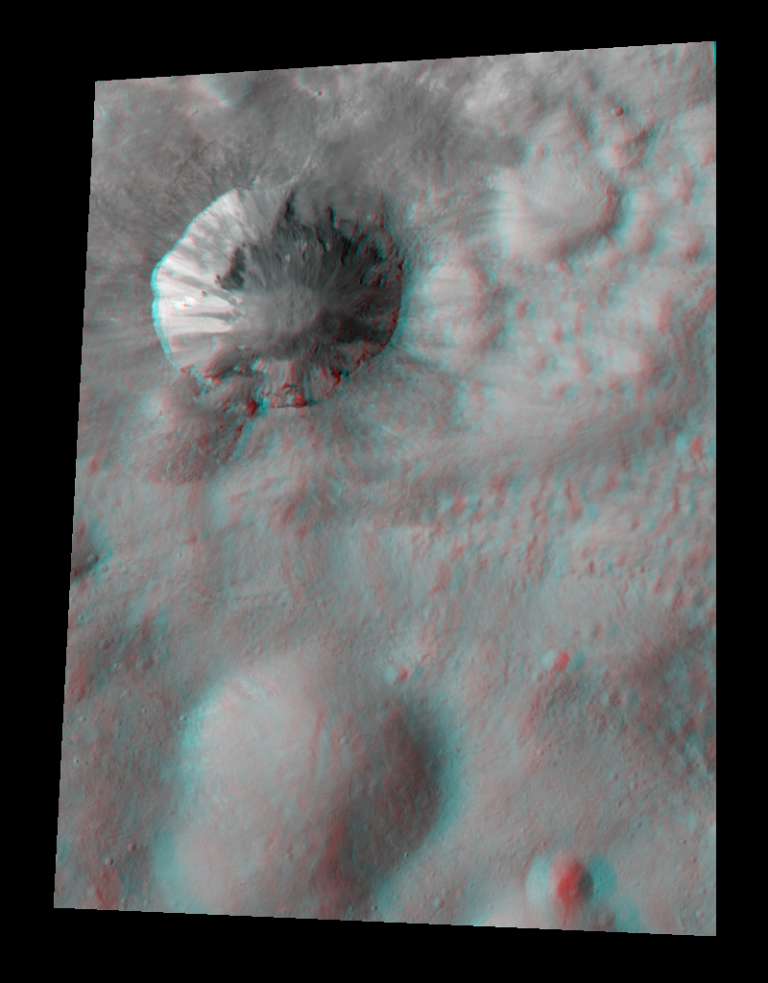
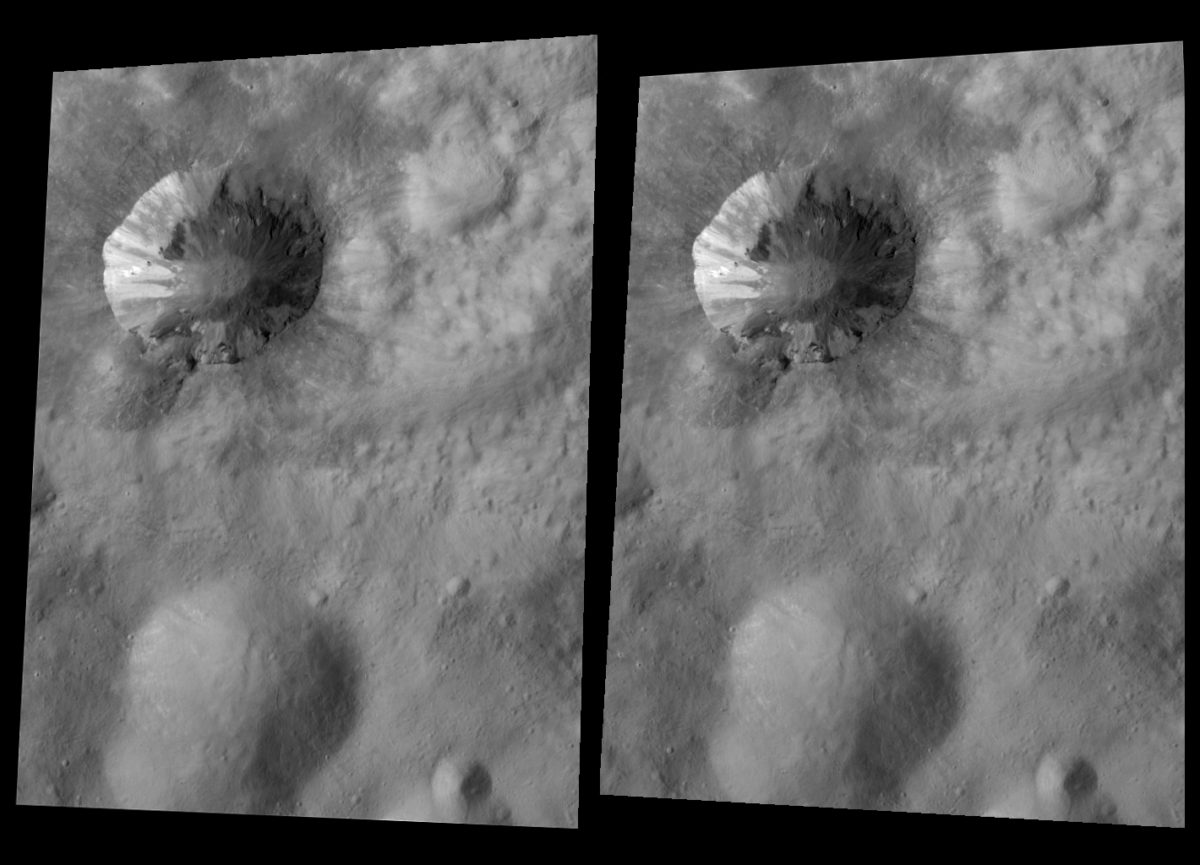
Originally I had planned to do another mosaic as in Figure 2, but I finally (for now) decided not to, for reasons of time. The color of Vesta is in visible light is very monotonous. But the Framing Camera system is not limited to visible light. It can also take photos in near-infrared bands. If we look at Vesta in this part of the electromagnetic spectrum, its appearance changes.
Below you can see a total of six individual frames, three each in two columns. The right column is made up of almost identical pictures as the left. The only difference is extremely increased color saturation. Each row of images was created using images taken through a different set of filters. Dawn's color filters admit wavelengths of light in a zone about 40 nanometers wide. The top pair of images were created from images taken through filters F7, F2, and F8, corresponding to 653, 555 and 438 nanometers (which are red, green, and blue visible light). This is the same color combination as in my color mosaic above. The middle pair is made up images taken through filters F4, F7, and F2, so the red frame was replaced with an infrared-filter image (centered at 917 nanometers). In the bottom pair of images, the green channel has been replaced with one taken through the F6 filter, with a wavelength of 829 nanometers. With these infrared channels, there are suddenly visible differences in the colors of the different terrains that are indicative of different compositions of surface layers.
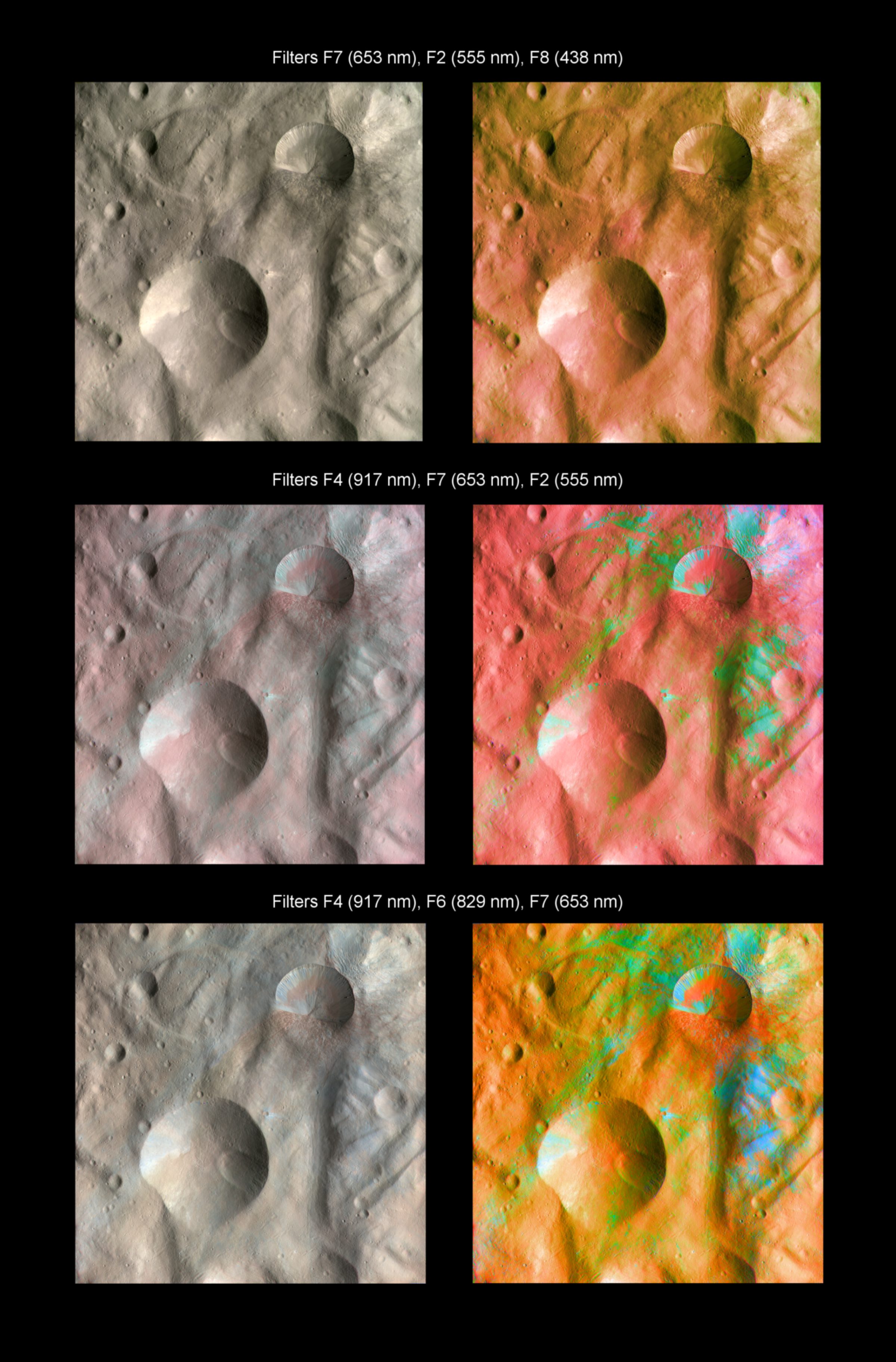
To finish, I have two pictures of the south polar mountains, which further demonstrate the effect of filters on the appearance of the resulting images. The first image is approximately true color.
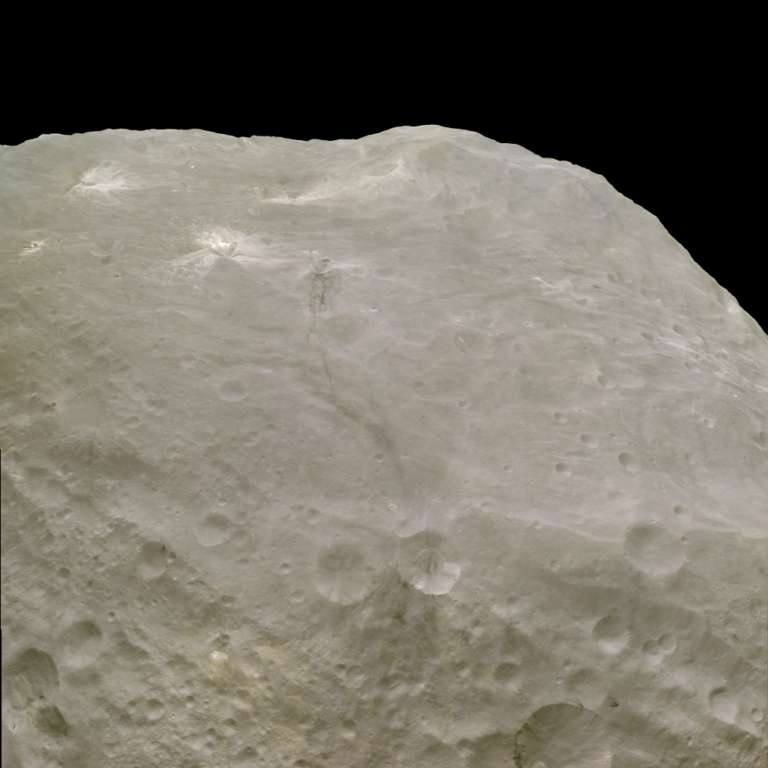
Here is a much more colorful picture, using frames taken through filters F2, F3, and F4, on August 6, 2011, from a height of 2717 km, with a resolution of 256 meters per pixel.
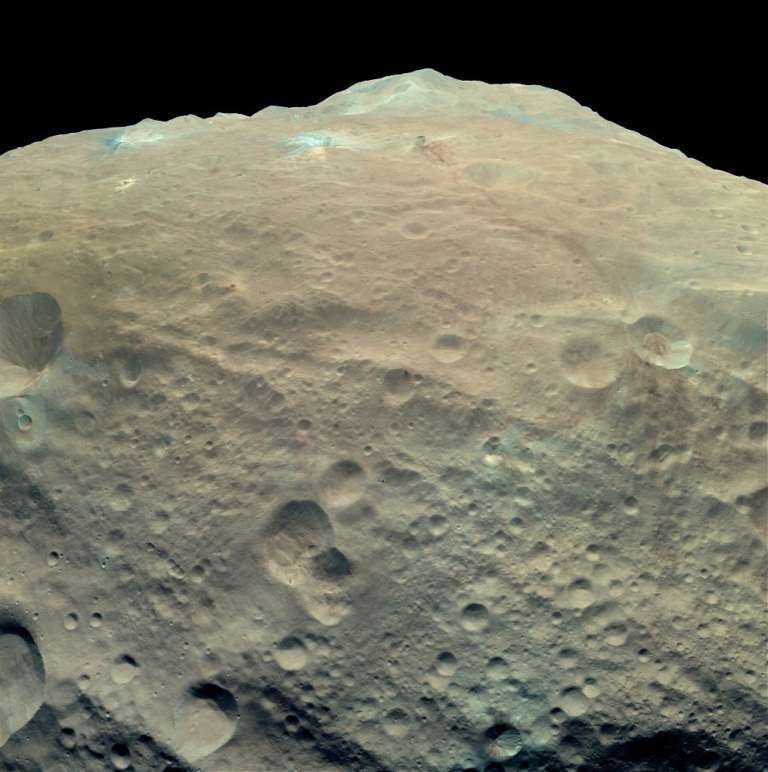
The Time is Now.
As a Planetary Defender, you’re part of our mission to decrease the risk of Earth being hit by an asteroid or comet.
Donate Today

 Explore Worlds
Explore Worlds Find Life
Find Life Defend Earth
Defend Earth

